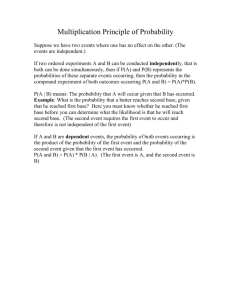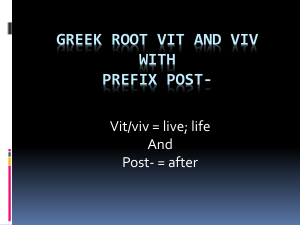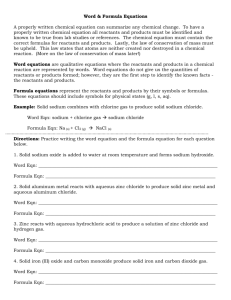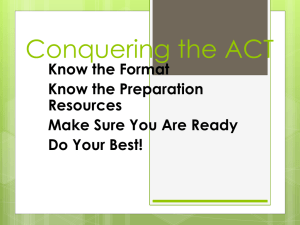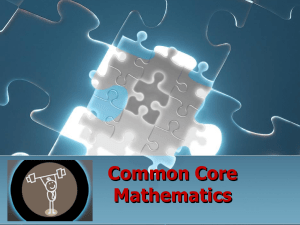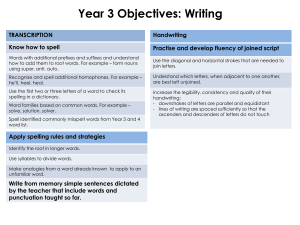Chemical Reactions and Equations - Red Hook Central School District
advertisement
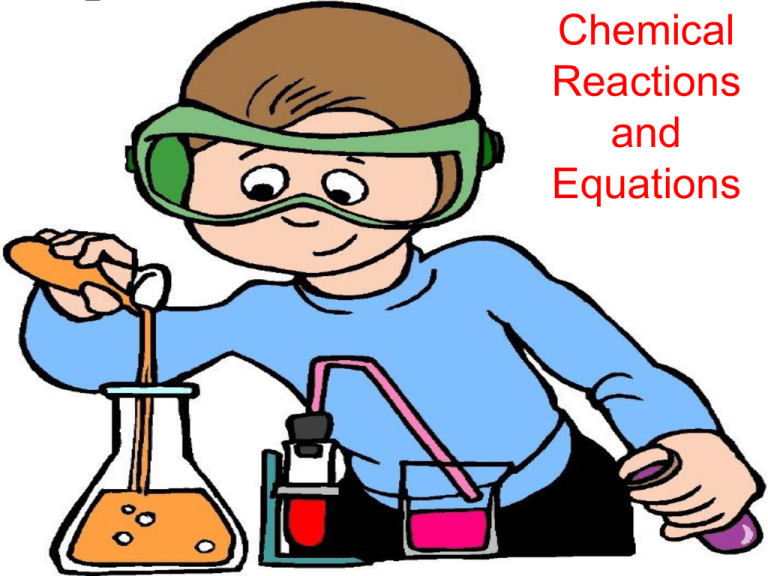
Chemical Reactions and Equations How can you tell if a chemical reaction has occurred? 1) 2) 3) 4) 5) Color change Heat produced/gets warm (exothermic) Heat absorbed/gets cold (endothermic) Gas produced (fizz) Solid produced/turns cloudy (precipitate) These are indications of CHEMICAL CHANGES Physical Changes…. DO NOT tell you a chemical reaction has occurred! Examples of physical changes: Phase changes (solid-liquid-gas) Changes in shape Is a chemical reaction occurring? Is a chemical reaction occurring? Is a chemical reaction occurring? Is a chemical reaction occurring? Is a chemical reaction occurring? Is a chemical reaction occurring? Is a chemical reaction occurring? Is a chemical reaction occurring? Is a chemical reaction occurring? Chemical formulas… are the “words” in the language of chemistry In the last unit you learned how to name compounds and write their formulas. You learned chemistry “words” like KNO3 and NaBr Chemical Equations… are the “sentences” in the language of chemistry. You will put together the “words” (formulas) you learned in the last unit to make “sentences” (chemical equations) As in English, “sentences” are more interesting and give you more information than isolated “words” “Punctuation and grammar” In addition to needing “words” in your “sentences”, you will also need some punctuation and grammar to so your sentence makes sense and is easy to understand. Every chemical equation (sentence) has formulas (words) as well as special symbols (punctuation) Symbols used in Chemical Equations + and yields a gas forms a precipitate forms Heat needed (reaction is endothermic) More symbols catalyst a catalyst is needed (s) Solid phase (l) Liquid phase (g) Gas phase (aq) aqueous (dissolved in water) “Grammar” Some basic rules for putting your chemical equations together correctly: 1) Like in English, always read from left to right across the page Start here ……………………………end here “Grammar” Some basic rules for putting your chemical equations together correctly: 2) Each equation has two halves. The half left of the arrow is the REACTANT side. The half right of the arrow is the PRODUCT side. REACTANTS PRODUCTS Chemical equations are easy! (compared to English!) You now know everything you need to know to write “grammatically correct” chemical equations Word Equations Translate the following word equation into an chemical equation: Hydrogen chloride in the liquid phase and sodium hydroxide in the solid phase yields aqueous sodium chloride and water Word Equations Hydrogen chloride in the liquid phase and sodium hydroxide in the solid phase yields aqueous sodium chloride and water HCl (l) + NaOH (s) NaCl (aq) + H20
